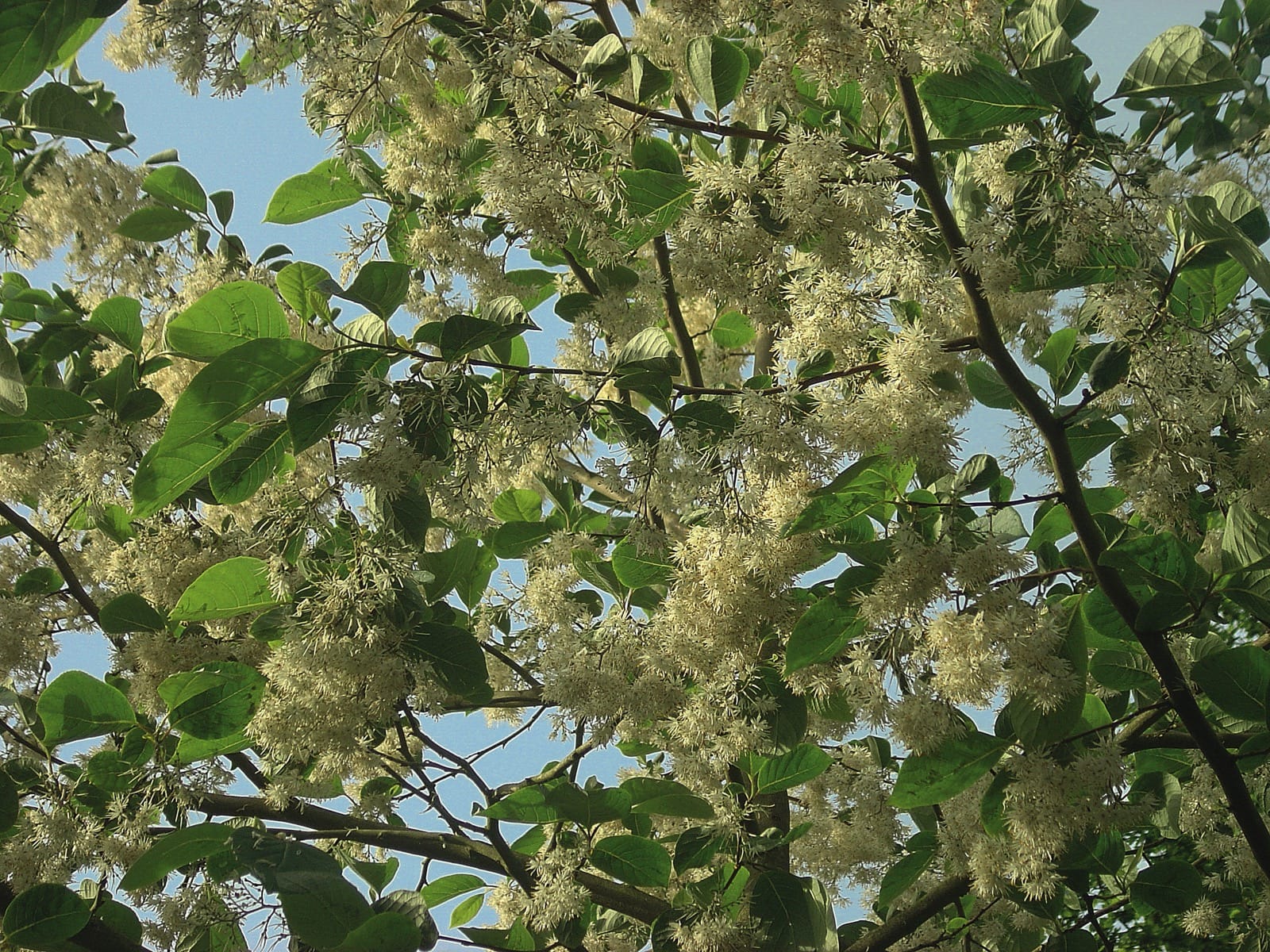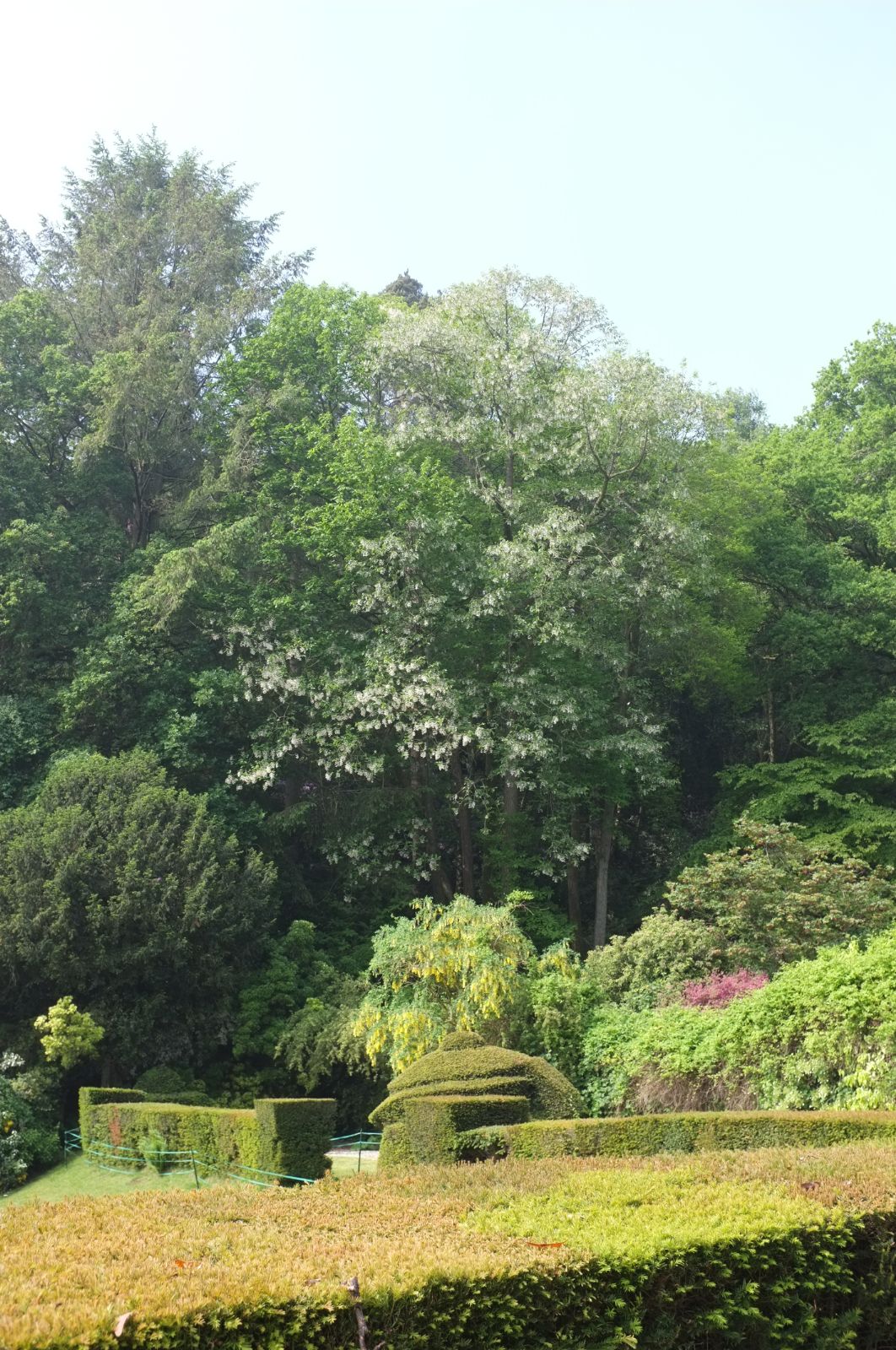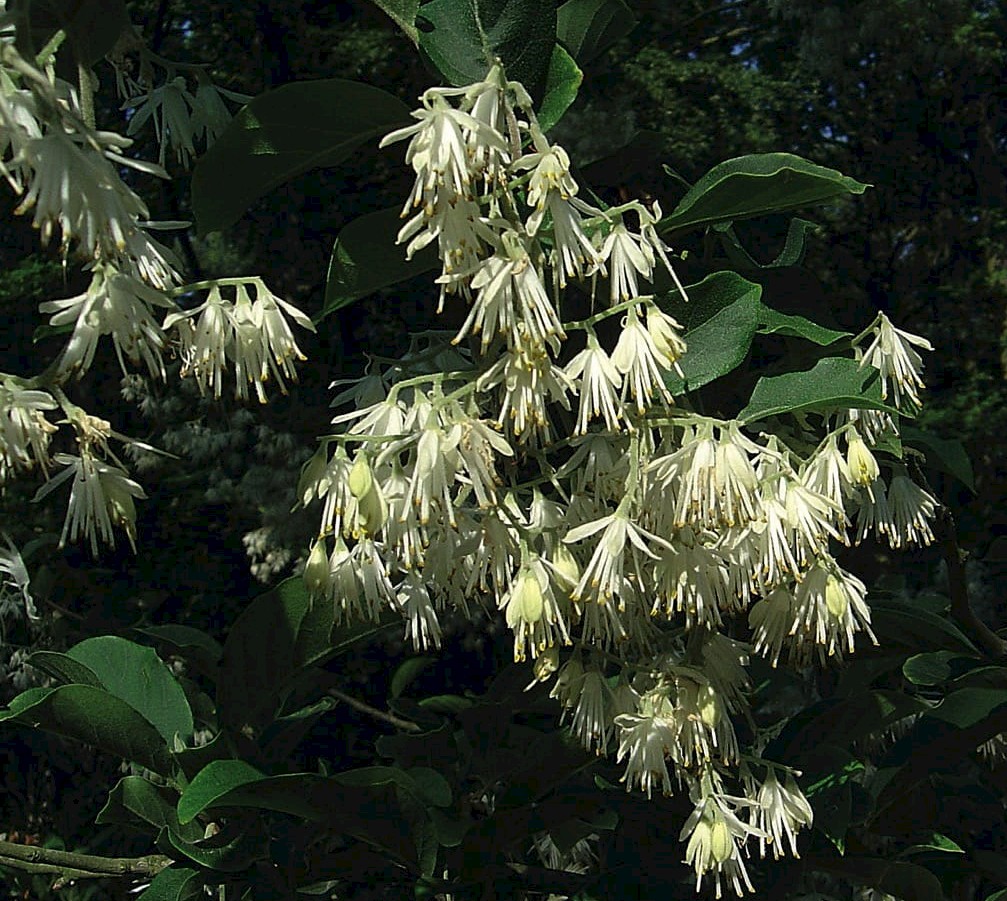Pterostyrax
Sponsor
Kindly sponsored by
Arabella Lennox-Boyd
Credits
John Grimshaw & Ross Bayton (2018)
Recommended citation
Grimshaw, J. & Bayton, R. (2018), 'Pterostyrax' from the website Trees and Shrubs Online (treesandshrubsonline.
Family
- Styracaceae
Pterostyrax comprises four species in China, Japan and Myanmar. They are small to medium-sized, sometimes multistemmed trees, deciduous, with naked buds. The leaves are alternate, with serrate margins; stipules absent. Inflorescences are pendulous, the branches one-sided, with numerous flowers. The flowers are hermaphrodite and 5-merous; the calyx is campanulate, ribbed, the corolla divided almost to the base, pubescent, and there are ten stamens, five long and five short. The fruit is a dry ribbed or winged drupe with a persistent style, forming a beak, and each fruit has one to two fleshy seeds (Hwang & Grimes 1996).
Pterostyrax hispidus been in cultivation since the late 19th century. Previous works, including Bean (1981) stated that Pterostyrax hispidus was introduced into cultivation in 1875, however this was actually the first recorded flowering in cultivation. The plants had been imported several years earlier from Japan and flowered in late May 1875 in the nurseries of Messieurs Thibault & Keteleer, at Sceaux and the Museum and Botanic Garden in Paris (Carrière 1875).
There may be some confusion over the identification of specimens of Pterostyrax hispidus in cultivation as most horticultural authorities state that this species comes from both China and Japan, but Hwang & Grimes (1996) do not acknowledge the presence of P. hispidus in China, calling chinese material P. psilophyllus. Their treatment and the one we adopt here recognise the difference between Japanese and Chinese material and as a result mature specimens should be checked to verify correct identification.
All Pterostyrax will grow well in any good soil, including alkaline conditions, though not on shallow chalk soil (Hillier & Coombes 2002), and are very hardy. They do best in areas with long hot summers, but require ample moisture and light shade (P. Wharton, pers. comm. 2008). The flowers are pleasant, but often somewhat concealed by the foliage. Propagation is by seed, or by cuttings, which root easily in August (Dirr 1998).
Identification key | ||
| 1a | Inflorescence paniculate to subcorymbose, to 13cm, fruits with 5 small wings, 0.8–2cm long, dense white-tomentose | P. corymbosus |
| 1b | Inflorescence pannicle to 26 cm, fruits with 5-10 ribs (not winged), 0.5–2cm long, distinctly hispid, hairs yellow or yellow-grey | (2) |
| 2a | Inflorescence 8–12cm Flowers c. 1.5cm long, Fruits 1.3–2 cm, with dense yellow-grey hairs, 5–8(–10) ribbed | P. psilophyllus |
| 2b | Inflorescence 13–26cm Flowers 0.5–1cm long, Fruits to 1cm, with dense yellow hairs, 10–ribbed | P. hispidus |



